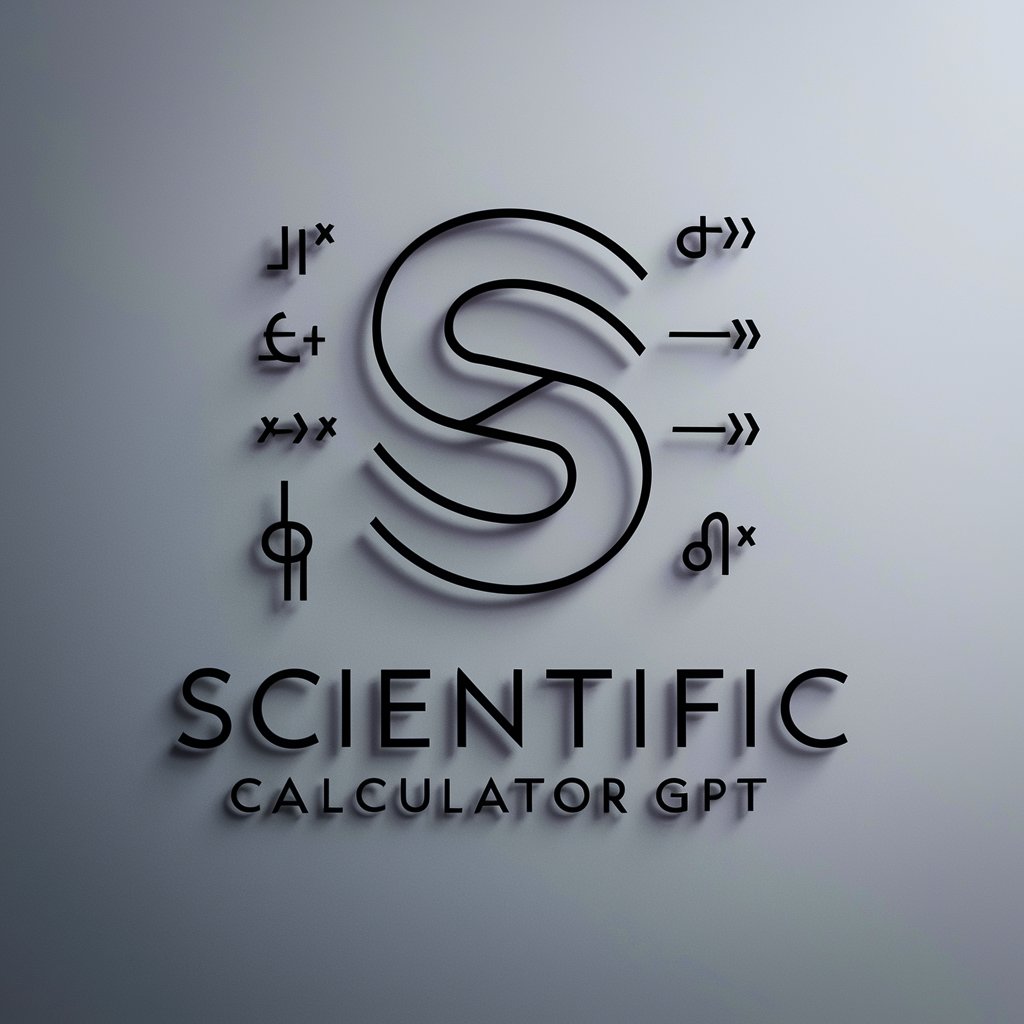Scientific Calculator - Advanced Math Solver

Hello! How can I assist with your calculations today?
AI-driven precision for complex calculations
Calculate the sine of
Evaluate the logarithm of
Compute the exponential of
Determine the cosine of
Get Embed Code
Overview of Scientific Calculator
Scientific Calculator is a specialized tool designed to perform a wide range of mathematical operations. Unlike standard calculators, it handles complex functions like trigonometry, exponentials, logarithms, and advanced arithmetic. Its core purpose is to provide accurate, efficient computational capabilities for mathematical problems that go beyond basic arithmetic. An example is calculating the sine of an angle in degrees. A user inputs the degree value, and the calculator efficiently computes the sine using trigonometric functions. Powered by ChatGPT-4o。

Key Functions of Scientific Calculator
Trigonometric Calculations
Example
sin(45°)
Scenario
Used in physics to determine components of vectors or in engineering for material stress analysis.
Logarithmic Computations
Example
log(100)
Scenario
Crucial in calculating decay rates in chemistry or sound intensity in decibels in acoustics.
Exponential Functions
Example
e^2
Scenario
Applied in finance for compound interest calculations or population growth modeling in biology.
Basic Arithmetic
Example
45 + 32
Scenario
Everyday calculations in various fields like budgeting in finance or measurements in cooking.
Target Users of Scientific Calculator
Students and Educators
Useful for learning and teaching complex mathematical concepts, especially in science, technology, engineering, and mathematics (STEM) fields.
Professionals in Science and Engineering
Essential for solving advanced mathematical problems in research, design, and analysis in various scientific and engineering disciplines.
Financial Analysts and Economists
Aids in complex financial calculations like interest rates, statistical analysis, and economic modeling.
Hobbyists and Enthusiasts
Beneficial for those with an interest in advanced mathematics, astronomy, or amateur radio, where complex calculations are often required.

How to Use the Scientific Calculator
Begin with YesChat
Start by accessing yeschat.ai to explore the Scientific Calculator capabilities without the need for a subscription or ChatGPT Plus.
Identify Your Calculation Needs
Determine the specific mathematical operation or function you need help with, such as algebraic expressions, trigonometry, logarithms, or complex equations.
Input Your Query
Enter your mathematical question or expression into the input field, ensuring to use standard mathematical notation for clarity.
Review the Results
Analyze the provided solution and any step-by-step explanations to understand how your query was resolved.
Utilize Advanced Features
Explore additional functions like graph plotting, equation solving, and unit conversion for a comprehensive mathematical toolset.
Try other advanced and practical GPTs
Tip Calculator
AI-Powered, Hassle-Free Tipping

Prepper Guide
AI-powered Crisis Readiness

睿智玩意儿
Humor meets wisdom in AI conversations.

Green Hydrogen Advisor
Empowering green hydrogen innovation with AI

Clinical Decision Support GPT
Enhancing Medical Decisions with AI

Serenity Now
Humorous advice for peace of mind

Code Translator
Transforming Code, Powering Innovation

Zombie Quest (Bronte)
Navigate the apocalypse with AI-driven choices.

Salesforce Developer
Empowering Salesforce Development with AI

Music Melodies and Lessons GPT
Empowering Your Musical Journey with AI

NetflixTrend Explorer
Discover Netflix gems with AI-powered insights

Classic Car Curator AI
Reviving Classics with AI Expertise

FAQs About the Scientific Calculator
Can the Scientific Calculator handle complex numbers?
Yes, it is equipped to perform operations with complex numbers, including addition, subtraction, multiplication, division, and finding the magnitude or angle.
Is it possible to plot functions with the Scientific Calculator?
Absolutely, the tool offers graph plotting capabilities for a variety of functions, enabling users to visualize mathematical concepts and analyze function behavior.
How does the calculator manage error handling or incorrect inputs?
The calculator is designed to identify syntax errors or invalid mathematical expressions, providing guidance to correct the mistakes for accurate calculations.
Can I use the calculator for statistical analysis?
Yes, it supports statistical functions such as mean, median, standard deviation, and probability distributions, making it suitable for statistical computations.
Does the Scientific Calculator offer unit conversion?
Indeed, it includes a unit conversion feature that allows for the transformation of measurements across different units, such as length, weight, and temperature.
